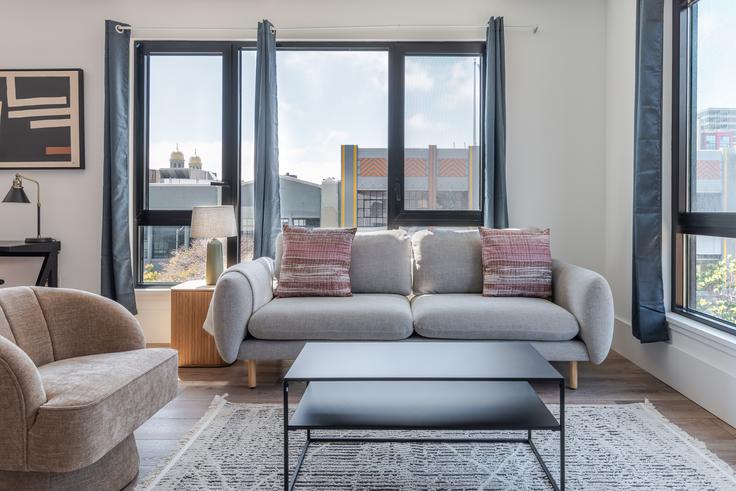In today’s travel landscape, understanding short term rental occupancy rates is crucial for both hosts and travelers. This metric not only influences pricing but also affects the availability of rental properties. As more travelers opt for the flexibility and comfort of short-term rentals, knowing how occupancy rates function can enhance your travel planning and overall experience.

Why Are Occupancy Rates Important?
The occupancy rate of a rental property indicates the percentage of time it is rented out compared to being vacant. High occupancy rates mean properties are in demand, often leading to higher prices. For travelers, understanding these rates can help in predicting costs and availability during peak seasons. Conversely, low occupancy rates might indicate potential discounts or the need for further research into why certain properties remain unoccupied.
How Are Occupancy Rates Calculated?
Calculating occupancy rates involves dividing the number of rented days by the total number of available days in a given period, then multiplying by 100 to get a percentage. For example, if a rental is booked for 24 days out of 30, the occupancy rate would be (24/30)*100 = 80%. This simple calculation provides valuable insights into market trends.
Factors Influencing Short Term Rental Occupancy Rates
- Location: Properties in popular tourist destinations tend to have higher occupancy rates.
- Seasonality: Rates fluctuate with seasons, often peaking during holidays and summer months.
- Pricing: Competitive pricing can boost occupancy rates, as travelers seek value for money.
- Property Features: Amenities and unique features can attract more bookings.
- Marketing: Effective advertising and positive reviews can enhance occupancy rates.
Maximizing Short Term Rental Bookings
For hosts, maximizing bookings is about understanding and leveraging occupancy rates. By analyzing trends and adjusting pricing strategies, hosts can better manage their properties. Resources like the rental guide offer valuable insights into optimizing rental strategies.
Traveler Tips for Booking Short Term Rentals
For travelers, understanding occupancy rates can lead to smarter booking decisions. Here are some tips:
- Travel Off-Peak: Consider traveling during off-peak seasons to enjoy lower rates and more availability.
- Book Early: Secure your rental early to ensure availability during high occupancy periods.
- Negotiate: Dont hesitate to negotiate rates, especially if booking for an extended period.
The Impact of Reviews on Occupancy Rates
Reviews play a significant role in influencing occupancy rates. Positive reviews can boost a property’s profile, leading to higher demand and occupancy. Travelers should always check reviews to ensure they select a property that meets their expectations. For hosts, encouraging guests to leave reviews can significantly impact their business.
Trends in Short Term Rentals
With the rise of platforms like Airbnb, the short term rental market is evolving rapidly. Trends show a shift towards unique experiences, with travelers seeking properties that offer something different. Understanding these trends can help both hosts and travelers make informed decisions.
For hosts looking to stay competitive, embracing sustainability and providing eco-friendly options can appeal to a growing demographic of environmentally conscious travelers. Our recycling guide offers insights into making properties more sustainable.
Technology’s Role in Occupancy Management
Technology plays a critical role in managing occupancy rates. From smart pricing tools to dynamic booking systems, technology helps hosts optimize their strategies. Travelers benefit from technology through improved booking platforms and enhanced communication with hosts. Our communication tips can help travelers navigate these technological advances.
For more insights into starting and managing a successful rental, check out this comprehensive guide for Airbnb owners.
The Future of Short Term Rentals
The future looks bright for short term rentals as more people embrace remote work and digital nomad lifestyles. With the flexibility to work from anywhere, travelers are increasingly choosing short-term rentals over traditional hotels. This shift is likely to keep occupancy rates steady, if not rising, in many areas.
Conclusion
Understanding short term rental occupancy rates is essential for anyone involved in the rental market, whether as a host or traveler. By keeping an eye on these rates, travelers can make informed booking decisions, while hosts can adjust their strategies to maximize profitability. As the market continues to grow and evolve, staying informed will ensure you make the most of your rental experiences.

FAQs on Short Term Rental Occupancy Rates
What affects rental occupancy rates the most?
Location, seasonality, pricing, property features, and effective marketing are key factors affecting occupancy rates.
How can travelers find the best rental deals?
Travelers can find the best deals by booking early, traveling during off-peak seasons, and negotiating rates.
Why is technology important in managing occupancy rates?
Technology helps hosts manage bookings and pricing efficiently, and provides travelers with seamless booking experiences.
This article contains affiliate links. We may earn a commission at no extra cost to you.

